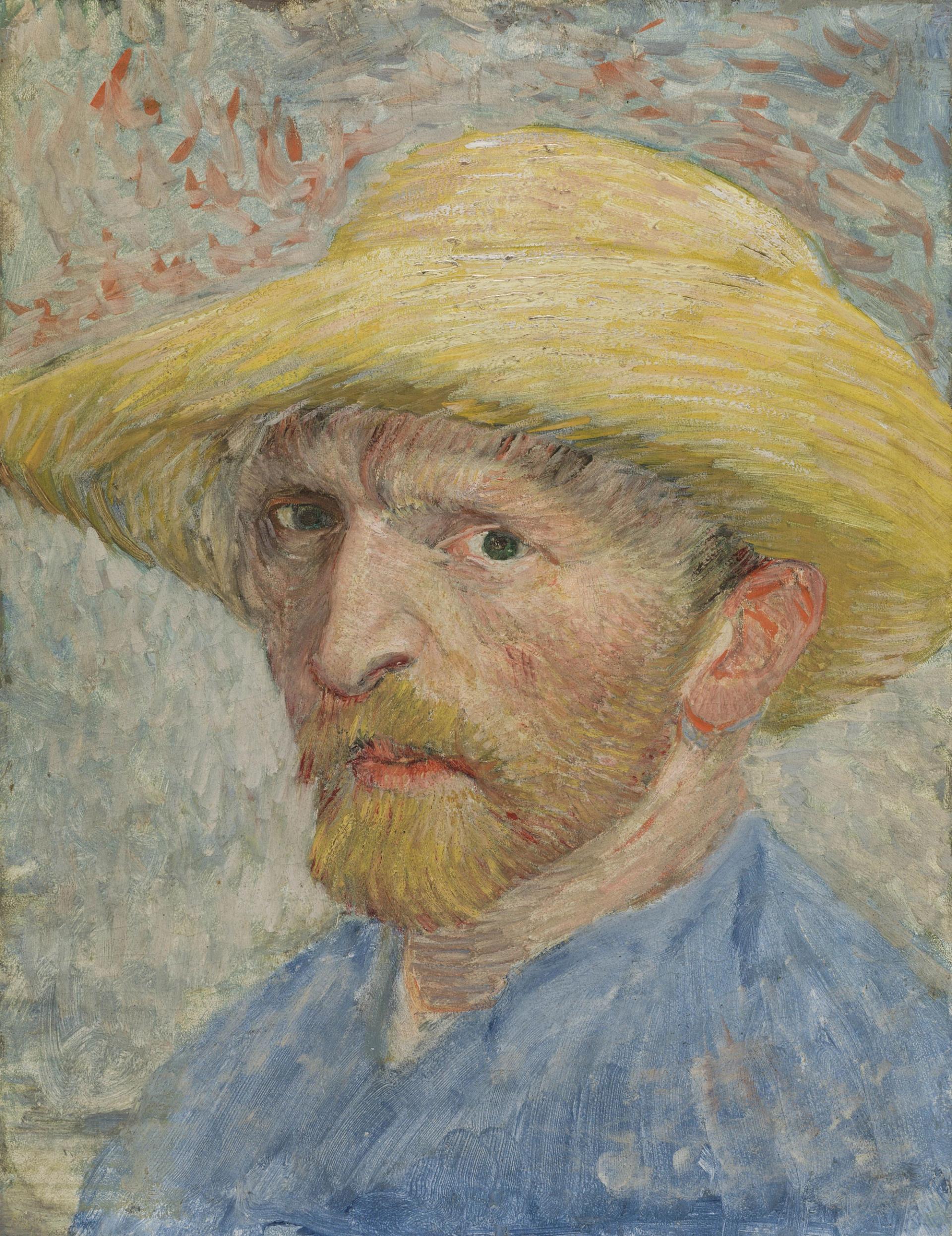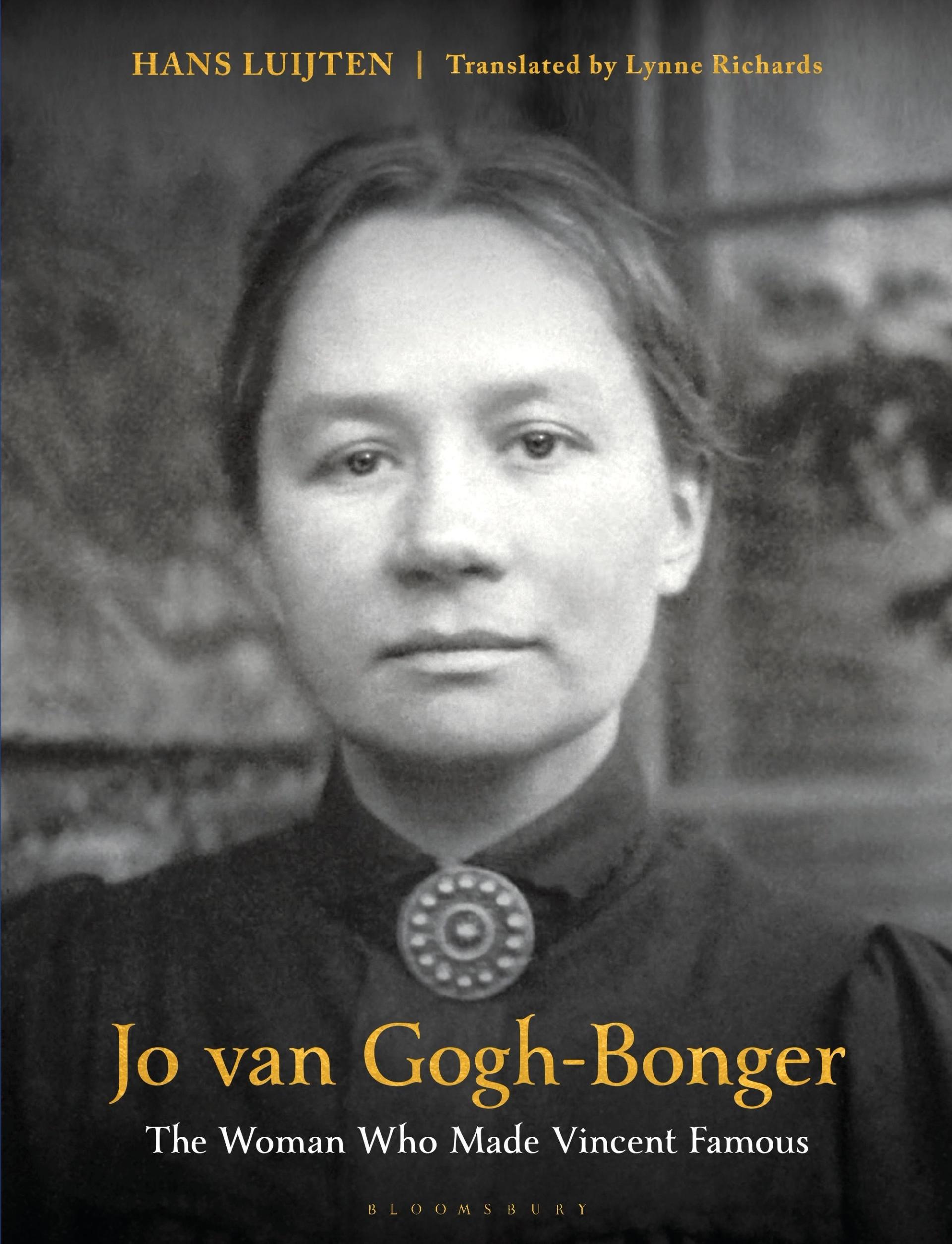Van Gogh is always in the news, but 2022 has been exceptionally noteworthy. This year included discoveries, such as Vincent’s fingerprint found on an olive grove painting at the Minneapolis Institute of Art and a hidden self-portrait painted beneath the head of a peasant woman at the National Gallery of Scotland. Less positively, it included disturbing attacks by climate protestors, with three of Van Gogh’s works being targeted in London and Rome.

Photomicrograph of Olive Trees (November 1889), at the Minneapolis Institute of Art, revealing the ridges of a fingerprint in the centre.
Photomicrograph taken using a stereomicroscope at the Midwest Art Conservation Center, Minneapolis, by Laura Hartman of the Dallas Museum of Art
As Covid began to wane, Van Gogh exhibitions started to pick up. The year opened with Van Gogh Self-portraits at London’s Courtauld Gallery, assembling 15 of the 35 surviving paintings (3 February-8 May). For the catalogue, I wrote an essay on how other artists had portrayed their friend Vincent.

Van Gogh’s Self-portrait with Bandaged Ear (January 1889), centrepiece of the Courtauld exhibition Courtauld Gallery, London
Arguably the most important exhibition of the year is Van Gogh in America, at the Detroit Institute of Arts (2 October-22 January 2023). This is the first show to tell the story of how US art lovers discovered Vincent’s work in the early 20th century, with more 70 works on display. Catch it if you can.

Van Gogh’s Self-portrait with Straw Hat (August-September 1887), the first Van Gogh to be bought by an American museum, in 1922
Credit: Detroit Institute of Arts
Van Gogh fans in the US have been particularly well-served with shows this year including Through Vincent’s Eyes: Van Gogh and His Sources at the Santa Barbara Museum of Art (27 February-22 May), presenting his work alongside those of his predecessors and contemporaries. A slightly different version of the exhibition had been shown earlier at the Columbus Museum of Art, Ohio (12 November 2021-6 February).
Van Gogh and the Olive Groves focussed on this key Provençal motif, opening at the Dallas Museum of Art (17 October 2021-6 February) and then moving to the Van Gogh Museum in Amsterdam (11 March-12 June). It was a treat to see these Saint-Rémy landscapes being brought together, after they had been scientifically examined.
Shows at the Van Gogh Museum in Amsterdam included The Potato Eaters: Mistake or Masterpiece? (8 October 2021-13 February 2022), on the artist’s first important early work. And, of course, there is the museum’s incomparable permanent collection to savour.
Van Gogh highlights from the collection of the Kröller-Müller Museum in Otterlo (Netherlands) travelled to Japan and Italy. These were shown at the Fukuoka Art Museum (23 December 2021-13 February), the Nagoya City Art Museum (23 February-10 April) and Rome’s Palazzo Bonaparte (8 October-26 March 2023).
But it was the “immersive experiences” that really pulled in the huge crowds, in dozens of major cities across the globe. A word of advice: they do vary considerably in quality (although their titles are confusingly similar). In London, my hometown, Van Gogh Alive: The Experience—which altogether has welcomed 8.5 million visitors worldwide in the past few years—was superior to its rival, Van Gogh: the Immersive Experience, which has notched up five million visitors.

Cover of Jo van Gogh-Bonger: The Woman Who Made Vincent Famous, published by Bloomsbury, London, November
The most important Van Gogh book of 2022 is undoubtedly the English edition of Hans Luijten’s Jo van Gogh-Bonger: The Woman Who Made Vincent Famous, published by Bloomsbury in November. Until recently, knowledge of Jo’s role was mainly confined to Van Gogh aficionados, but in the last year or two her importance has become much more widely appreciated.
I hope there will also be an English translation of another book by a Dutch author, the Rotterdam curator Alexandra van Dongen’s Dichter bij Vincent: alledaagse voorwerpen in het werk van Vincent van Gogh (Closer to Vincent: Everyday Objects in the Work of Vincent van Gogh). Her findings about the items portrayed in the paintings encourage us to look at them afresh. She also curated a small exhibition (30 July-30 October) at the Van Gogh House in Zundert, the artist’s birthplace in the south of the Netherlands.
In terms of museum acquisitions, New York’s Metropolitan Museum of Art managed to buy a set of four of Van Gogh’s rare prints. And Munich’s Staatliche Graphische Sammlung acquired an early Van Gogh drawing, Burial in Nuenen (December 1883). But these were works on paper, and paintings are nearly always beyond the financial reach of museums.

Van Gogh’s Orchard with Cypresses (Verger avec cyprès) (April 1888), which fetched a record price © Christie’s Images Limited 2022
When it comes to auction sales, Orchard with Cypresses (April 1888) fetched $117m when it came up at Christie’s in November as part of the collection of the late Paul Allen, co-founder of Microsoft. This represented a record price for a Van Gogh at auction. The identity of the new owner remains a mystery.
Other paintings which sold at auction this year were: Fields near the Alpilles (November 1889, sold for $52m), a fragment of A Pair of Lovers (March 1888, sold for £10m), Beach at Scheveningen in Calm Weather (August 1882, sold for $2.8m) and Still-life with copper Coffee Pot and two White Bowls (April 1885, sold for €302,000). The first two were painted in Provence, Van Gogh’s most sought-after period, and the last two were Dutch paintings, which explains the striking price differentials.
Several works on paper came up at auction: Park at Arles with a Corner of the Yellow House (April 1888, sold for $3.8m), Landscape with Walking Woman (April-May 1883, sold for £1.7m), Pastures near Rijswijk and the Schenkweg (January-February 1882, sold for £693,000) and Head of a Man wearing a Hat (early 1887, sold for €137,000)
Two examples of Van Gogh’s etched Portrait of Dr Gachet (June 1890) sold at the Ader auction house in Paris, going for €204,800 in May and €198,400 in November.

Van Gogh’s Sunflowers (August 1888, left) and sunflowers growing in Ukraine (right)
Credit: Van Gogh: National Gallery, London; Ukraine: Max Pixel
And to end the year, let’s pay tribute to the people of Ukraine, whose national flower is the sunflower. When Putin’s troops marched across the border on 24 February, few of us believed that the fighting would continue into 2023, bringing massive destruction and loss of life.
• The blog Adventures with Van Gogh will be back after the holiday break, on 6 January 2023




